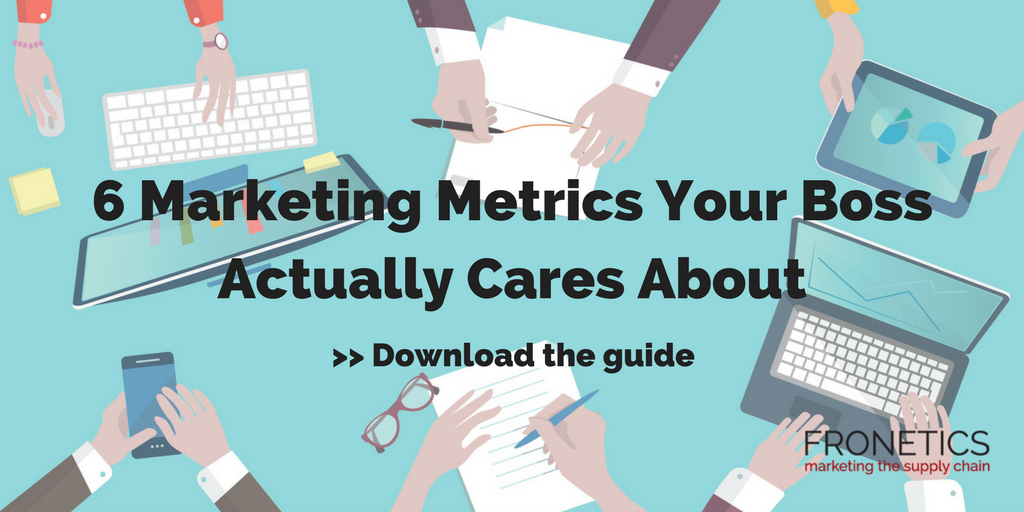
by Fronetics | Apr 14, 2017 | Blog, Content Marketing, Marketing, Social Media
Social media gives you access to aspirational customers and their networks, a benefit that can’t be quantified in dollars.
One of the trickiest things about implementing a social media strategy is that success can be difficult to measure. While most professionals acknowledge that a social media marketing presence is important, it’s hard to make a case for resources when you can’t precisely quantify the value in terms of dollar amount.
This, however, shouldn’t stop your business from recognizing the importance of social media as part of a robust marketing strategy. You need to start thinking about value in terms of potential, rather than the immediate sale.
“It’s important that we continue to shift our focus from the short-term sale to the long-term value of social media,” says Emily Teele, loyalty and retention marketing manager at West Elm. “Part of our willingness to make this shift comes from trust that our efforts will pay off, even if not immediately, and part comes from finding new ways to measure results over time.”
Tomorrow’s customers
One of the most valuable and exciting aspects of social media is that it allows business to discover and engage with a new segment of the B2B community: aspirational customers. In the past, businesses haven’t had access to these customers. Now that we can find out who they are, their long-term value cannot be overstated — both as buyers, and in building brand loyalty and an engaged customer base.
According to a recent study published in MIT Sloan Management Review, aspirational customers are likely to follow multiple brands on social media sites. Over half follow at least one brand that they haven’t made a purchase from. But, “our data suggests that they do plan to purchase in the future,” say the study’s authors. “Today’s followers are very likely to be tomorrow’s customers.”
The social network = social media success
There’s another factor to consider regarding the value of social media marketing. At its core, these are networking platforms. That means you not only have access to a new customer base, but to their connections as well.
Your followers’ engagement on social media can expand your reach, as they engage with their own networks. Putting a dollar value on such social reach is fairly meaningless — but it has the potential to add to your bottom line both now and in the future.
What’s more, a recent McKinsey study attributes word of mouth to be the primary influence for up to 50% of all purchase decisions. The study authors go on to say, “Followers who are not yet purchasers can share their experience with the brand, and deepen their commitment to the brand, even prior to that first purchase.”
It’s time we start thinking about social media success in this new way: in terms of potential and expanding value, rather than just immediate dollar amounts.
Related posts:


by Fronetics | Oct 21, 2014 | Blog, Data/Analytics, Marketing, Social Media

Individuals within the logistics and supply chain industries want to learn more about social media ROI. A recent survey conducted by Fronetics found that 81 percent of respondents reported that information on proving social media ROI would be helpful to their company.
Proving social media ROI can seem impossible, but it is not if you put the right framework in place. Here’s how to put that framework in place, and prove social media ROI:
Set goals
Support your goals with SMART objectives. This allows you to track and measure your progress towards meeting your goals.
- Specific: Describe your objectives specific to the results you want. Go deeper than “gain leads” to “achieve a visitor to lead conversion rate of one percent.”
- Measurable: Metrics are essential. You can’t assess your progress towards your goal without metrics.
- Achievable: Make your goal achievable. A visit to lead conversion rate of 10 percent may not be realistic. Your goal of a visitor to lead conversion rate may be more plausible. When setting your objectives, keep reality in check.
- Realistic: As with any job, you need to have the right tools. Make sure that you have the resources, tools, and talent to meet your objectives.
- Timed: Be specific with your objective and incorporate a time frame.
Track and measure
Once you have set your goals and objectives and have identified your key metrics, put a system in place that will track and measure your metrics. At the very least, your metrics should be tracked on a monthly basis.
React
Tracking metrics is not enough. You need to react. Look at your metrics in the context of your goals and objectives. Which efforts are moving you towards your objectives and goals? Which efforts are not supporting your goals and objectives? Can these efforts be tweaked? Should you scrap them and try something new?
Taking a data driven approach is critical to proving ROI.
Wash. Rinse. Repeat.
This process is not static. When you achieve your goals and objectives, set new ones. If you are really struggling to meet your goals and objectives, you may need to revisit them to determine if they need to re-worked.
Proving social media ROI is possible. But it needs to be supported by a framework. Take the time to put a solid framework in place for your business.

by Fronetics | Oct 21, 2014 | Blog, Data/Analytics, Marketing, Social Media

Individuals within the logistics and supply chain industries want to learn more about social media ROI. A recent survey conducted by Fronetics found that 81 percent of respondents reported that information on proving social media ROI would be helpful to their company.
Proving social media ROI can seem impossible, but it is not if you put the right framework in place. Here’s how to put that framework in place, and prove social media ROI:
Set goals
Support your goals with SMART objectives. This allows you to track and measure your progress towards meeting your goals.
- Specific: Describe your objectives specific to the results you want. Go deeper than “gain leads” to “achieve a visitor to lead conversion rate of one percent.”
- Measurable: Metrics are essential. You can’t assess your progress towards your goal without metrics.
- Achievable: Make your goal achievable. A visit to lead conversion rate of 10 percent may not be realistic. Your goal of a visitor to lead conversion rate may be more plausible. When setting your objectives, keep reality in check.
- Realistic: As with any job, you need to have the right tools. Make sure that you have the resources, tools, and talent to meet your objectives.
- Timed: Be specific with your objective and incorporate a time frame.
Track and measure
Once you have set your goals and objectives and have identified your key metrics, put a system in place that will track and measure your metrics. At the very least, your metrics should be tracked on a monthly basis.
React
Tracking metrics is not enough. You need to react. Look at your metrics in the context of your goals and objectives. Which efforts are moving you towards your objectives and goals? Which efforts are not supporting your goals and objectives? Can these efforts be tweaked? Should you scrap them and try something new?
Taking a data driven approach is critical to proving ROI.
Wash. Rinse. Repeat.
This process is not static. When you achieve your goals and objectives, set new ones. If you are really struggling to meet your goals and objectives, you may need to revisit them to determine if they need to re-worked.
Proving social media ROI is possible. But it needs to be supported by a framework. Take the time to put a solid framework in place for your business.
by Fronetics | Apr 16, 2014 | Blog, Marketing, Social Media
For every blog post, tweet, and Facebook update, you should ask yourself: Who is listening?
Without a comprehensive social media strategy, your message may be getting lost in the chatter. There are a number of tools that will help you monitor your online influence and, effectively, make the necessary adjustments to ensure your efforts are paying off.
Here are 10 free tools to help you measure your social media ROI. The basic features of each of these tools are free.
1. Hootsuite
Considered one of the top social media management systems, Hootsuite is a web-based dashboard that enables your business or organization to execute campaigns across multiple social networks. This tool helps you identify audiences, distribute targeted messages, launch marketing campaigns, streamline workflow and much more. It also provides weekly reports on your social analytics. Social network integrations include, among others, Facebook, Twitter, LinkedIn, and Google+.
2. Facebook Insights
Sometimes the best analytics tools are built into the platform, like Facebook Insights. After your Facebook page receives at least 30 likes, Insights can be applied to break down the metrics of your content. See how people discover and respond to your posts and use the anonymized demographic data to analyze trends and tailor your message.
3. Google Analytics
By using Google Analytics you will have access to a wealth of strategic data across multiple venues such as ads, videos, websites, tablets, smartphones and social tools. The result is a complete profile of your potential customers and their needs. Learn, for example, how visitors find your site, what they like and don’t like, and what they technology they use to access the information.
4. TweetDeck
TweetDeck resembles Hootsuite but is exclusively focused on your engagements on Twitter. This real-time tracking and organizing tool allows you to customize your Twitter experience in one interface. You can manage multiple accounts, build timelines, and track hashtags, events, and topics.
5. SumAll
SumAll connects you to all the services you use in one interactive chart. SumAll enables you to monitor and measure more than 30 services (e.g. Facebook, Twitter, Instagram, PayPal, Google Analytics) – for free. SumAll is a great option for small and medium sized businesses who want to be able to monitor all of their platforms in one spot – and have reports delivered via email on a daily basis.
6. Twazzup
An ideal tool for those new to Twitter, Twazzup enables you to follow a real-time stream of updates about keywords of your choosing. The interface presents a clear look at your related real-time tweets as well as trending and user information. It also identifies the top influencers in your field.
7. IceRocket
Specializing in displaying the most up-to-the-second search results, IceRocket covers blogs, the web, Twitter, and Facebook. Find out who links to your blog posts and search the IceRocket database of 200 million blogs. Your monitoring results can be viewed on a single, easily digestible page.
8. Klout
How influential are you online? The so-called “Klout score” reveals your effectiveness on Twitter, Facebook, Google+, LinkedIn, Foursquare, Wikipedia, and Instagram. The company recently added business analytics to its list of services to assist users learn more about their online audiences.
9. HowSociable
HowSociable measures the impact of your brand across multiple social media platforms, helping you identify which one is the best fit for you. By analyzing the metrics of your presence on 36 popular social media sites, this tool produces a score between 1 and 10 to indicate the activity around your brand during a given week.
10. Addictomatic
Addictomatic is a straight-forward application to monitor your brand’s reputation and industry developments. Simply select your keywords and Addictomatic will scan a variety of platforms such as Google, Bing, Twitter, WordPress, YouTube and Flickr.

by Fronetics | Apr 10, 2014 | Blog, Marketing, Social Media

Return on investment (ROI) is not a metric which is well suited to measuring the value participating in social media can bring to a company. And, unfortunately, there is no distinct metric or formula that can completely capture the impact, value, and ramifications of participating. Because of this, many companies choose not to participate in social media. This is a mistake. While measuring social media ROI may not be as easy as pie, it can be done. And, more often than not, participating in social media will yield a positive ROI.
Investing just six hours a week in social media can yield a positive ROI
According to the 2013 Social Media Marketing Industry Report, 92 percent of respondents reported that spending as little as six hours a week on social media increased exposure to their business. Sixty-four percent of respondents reported that by spending as little as six hours a week on social media they were able to see lead generation benefits. In addition to increased business exposure and lead generation benefits, respondents also reported that participating in social media reduced marketing costs. Specifically, 38 percent of companies with 1,000 employees or more reported that social media decreased marketing expenses and 62 percent of businesses with 10 or fewer employees reported a decline in marketing expenses. Social media was also found to benefit companies with respect to gaining marketplace intelligence–71 percent of respondents who spent at least six hours per week on social media reported an increase in marketplace intelligence.
More exposure, more traffic, more leads, more customers
Turning to an example, SFJ Material Handling Equipment, a family-owned company established in 1979, is the largest stocking distributor of new and used material handling equipment in the United States. The company has more than 53,000 followers on Twitter (and is gaining 200 to 400 followers per week), more than 38,000 Facebook likes, and has more than 2,000 Google+ followers. The company reports that nearly 20 percent of their website traffic is driven by social media. Stafford Sterner, President, notes “If you’re trying to reach out to totally new markets, then you might want to do Facebook and Twitter. If you’re comfortable building that relationship with people or companies you’re close to, then it’s LinkedIn.”
Another example is that of Kinaxis, a supply chain management company. Kinaxis launched an online social media campaign with the objective of doubling leads and web traffic numbers. The campaign included two online comedy series (Suitemates and The Late Late Supply Chain Show) and the launch of the company’s 21st Supply Chain Blog. The campaign was successful–web traffic increased by 2.7 times and leads increased by 3.2 times.
When executed correctly, your company can realize a positive ROI on your investment in social media.
Not participating in social media is a mistake your company can not afford to make.




